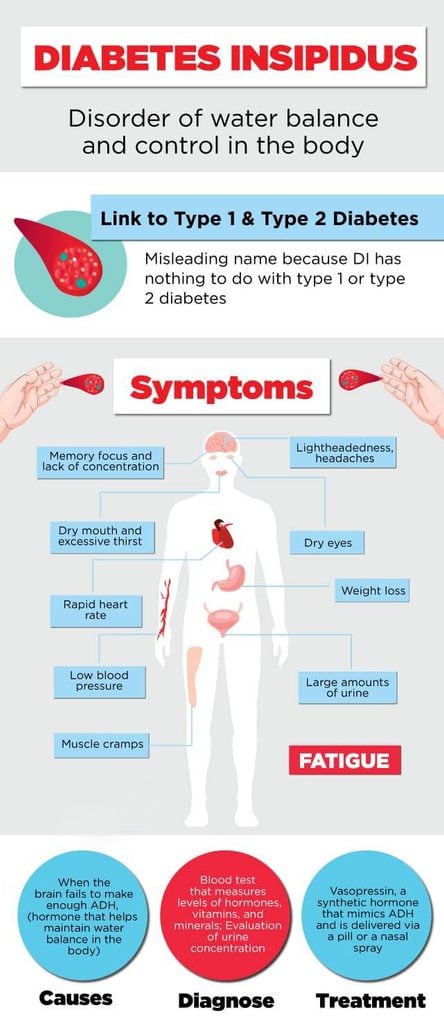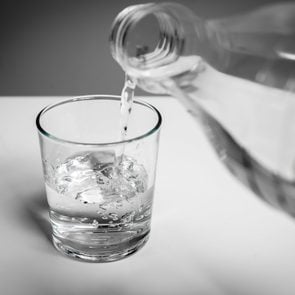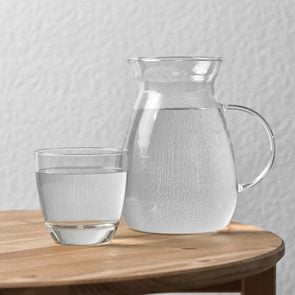6 Things You Need to Know About Diabetes Insipidus
Updated: Jun. 30, 2022
The name is definitely misleading—diabetes insipidus has nothing to do with blood sugar, insulin, or diabetes as you know it.
What is diabetes insipidus?
You’re no doubt aware of diabetes mellitus, which has type 1 and type 2 variations. However, there’s another form out there known as diabetes insipidus (DI). It’s a disorder of water balance and control in the body, explains Christopher Calapai, DO, an osteopathic physician board-certified in family medicine and anti-aging medicine. People with the condition are typically always thirsty, even after drinking fluids, and they also produce large amounts of urine—over three liters per day in adults, or two liters per day in children.
What is its link to type 1 or type 2 diabetes?
Diabetes insipidus is a misleading name because DI has nothing to do with type 1 or type 2 diabetes. Patients with DI have normal blood sugars, says Mark Terris, MD, an otolaryngology-head and neck surgeon and author of Bullets to Bandages.
What are diabetes insipidus symptoms?
The main symptom of diabetes insipidus is producing very large amounts of urine. So other symptoms are related to dehydration: a dry mouth, excessive thirst, dry eyes, fatigue, and lightheadedness, says Dr. Terris. Other possible diabetes insipidus symptoms are weight loss and issues with loss of memory and concentration. It can also lead to low blood pressure, headaches, rapid heart rate, and dry mouth, and can cause muscle cramps and confusion, says Dr. Calapai.
What are the causes of diabetes insipidus?
The brain secretes a hormone—ADH—that helps maintain water balance in the body; when the brain fails to make enough ADH, diabetes insipidus results, explains Dr. Terris. In most cases, no one’s sure what triggers the disorder. “It may be related to an autoimmune disease in which the immune system produces antibodies against the ADH-producing cells,” he says. “It can also be caused by trauma, pituitary surgery, and stroke.”

How is diabetes insipidus diagnosed?
When Dr. Calapai evaluates patients for the condition, he does a comprehensive blood test that measures levels of hormones, vitamins, and minerals; he also evaluates the patient’s history of trauma and medication use. To confirm a diagnosis, Dr. Terris will limit the patient’s water intake to see what happens with urine concentration—in diabetes insipidus, the urine does not become more concentrated when water is restricted. If your diagnosis says you don’t have DI, ask your doctor about these other medical reasons you’re peeing a lot.
How is diabetes insipidus treated?
The primary treatment for diabetes insipidus patients is vasopressin, a synthetic hormone that mimics ADH and is delivered via a pill or a nasal spray. “In rare cases where the cause is a side effect of medication, most commonly lithium, stopping lithium treatment can be effective and the medication amiloride can also be used,” adds Dr. Terris. All DI patients also need to monitor their urine output, fluid intake, and weight, and they are taught to recognize early signs of dehydration. If you think you may have DI, look out for these unexpected symptoms of dehydration.



















